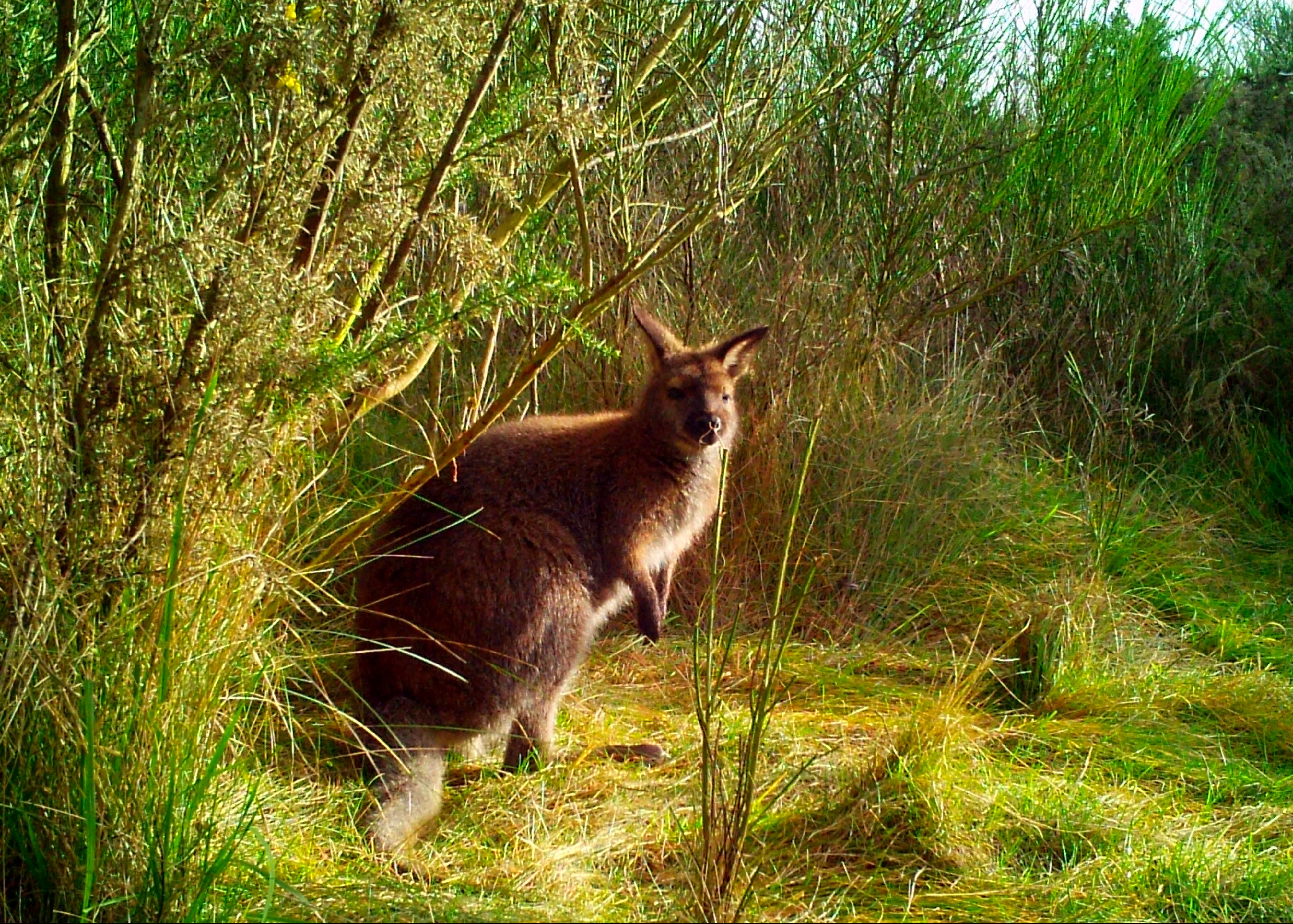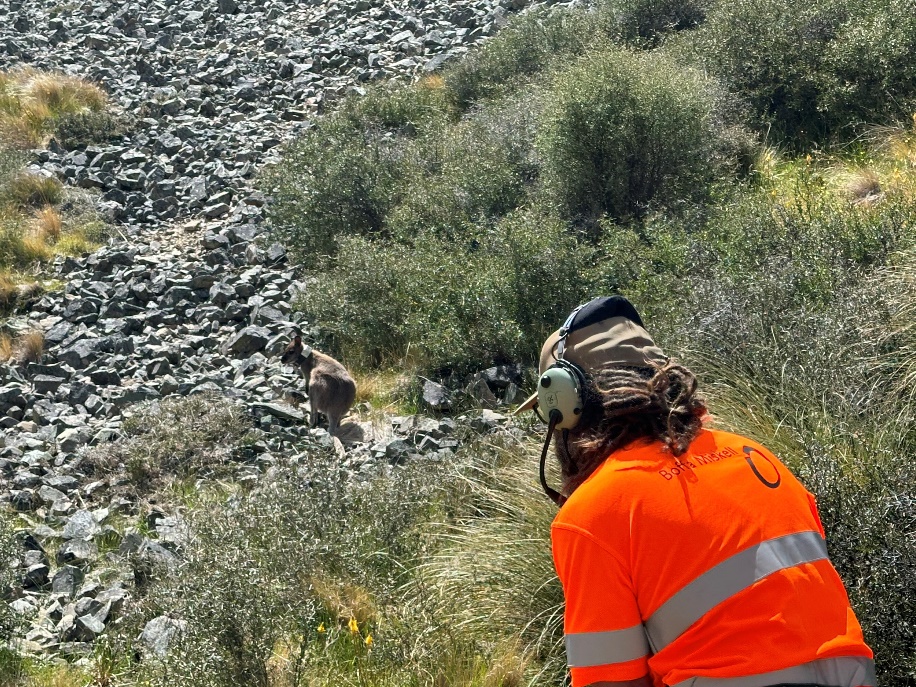First spy wallaby hunt successful: ORC
Monday 5 February 2024

ORC has completed its first surveillance operation looking at whether spy wallaby will lead hunters to other wallaby.
Monday 5 February 2024

ORC has completed its first surveillance operation looking at whether spy wallaby will lead hunters to other wallaby.
One of the 10 spy wallaby has travelled 42 kilometres from Canterbury into Otago and is still moving.
The release of ten ‘seeker’ or spy wallabies fitted with satellite GPS collars into sites in Waitaki and Mackenzie districts last year marked a New Zealand first in the fight against Bennett’s wallaby, an invasive introduced pest.
The Otago Regional Council is leading the project with support from Environment Canterbury and the Tipu Mātoro National Wallaby Eradication Programme. It is hoped the two-year research programme testing the usefulness of spy wallaby will provide a new tool in the battle against this fast-breeding pest.

Boffa Miskell project manager Brent Barrett releases one of the seeker wallaby
Last week, ORC’s aerial hunting team located nine of the 10 spy wallaby, where they found and destroyed 18 other wallaby. “While the results from this first hunt are encouraging, further hunts are still needed before we are able to fully assess whether this technique works,” says ORC’s Project Delivery Specialist - National Programmes, Gavin Udy.
“This first run is about getting out there and locating and eliminating any other wallaby around the spy wallaby and testing our methodology, and then integrating any improvements identified into future hunts. The first hunt went very successfully, and the team are looking forward to the next one in a month’s time.” says My Udy.
The spy wallaby will continue to be monitored by a hunting team over the next 11 months to see if they lead the hunters to other wallabies. Those other wallabies will then be shot, leaving the seeker wallaby to continue to seek out more wallabies until no more individuals can be found.
The 10th ‘spy’ wallaby was not pursued as it was considered too close to nearby dwellings to hunt the area safely. Since its release though, this wallaby has moved an incredible 42km from its release site and is now in Otago.
“Finding wallabies across large landscapes and difficult terrain where there are few present, is labour intensive. Any wallabies that go undetected allow small breeding populations to form and grow and become established over time. This is why it is critical that we develop new cost-effective tools to find wallabies in these environments.”
Using ‘seeker’ animals as a method of pest control is common in feral goat and tahr control. If this technique can be used successfully for wallaby, which are moderately gregarious, it will make a significant difference to efforts to eradicate Bennett’s wallaby from Otago and South Canterbury, particularly in areas where we have very low wallaby numbers.
“Tipu Mātoro’s research programme is all about improving existing wallaby detection, surveillance, and control methods, and finding new ones to address the pest wallaby problem, “says Mr Udy.
ORC is investing $110,000 over two years in the field work component of this research, the potential benefits of which will far exceed that investment in terms of protecting Otago from wallaby spread and the damage they do to native bush, farms, crops, commercial forestry, and our biodiversity.
As part of the research, the Tipu Mātoro National Wallaby Eradication Programme is contributing an additional $100,000, while another programme partner, Environment Canterbury, is supporting the research through landowner consultation, DNA sampling and supplementary control work.
The research is being conducted under approved permits from the Ministry for Primary Industries (MPI) and the Animal Ethics Committee at Lincoln University, and permission granted by landowners to release the wallabies.
There has been an increase of reported wallaby sightings in the past year which is good news, and people are asked to keep an eye out and report wallaby sightings, dead or alive, and wallaby kills; as the more eyes on the ground the better to prevent wallabies becoming established in Otago.
The public are asked to report a sighting at: reportwallabies.nz
The next hunt is planned for the week of the 19th of February, weather dependant.